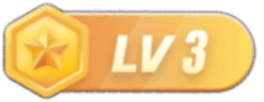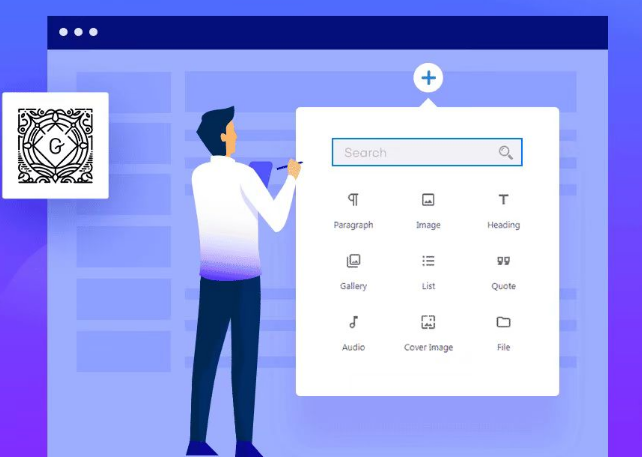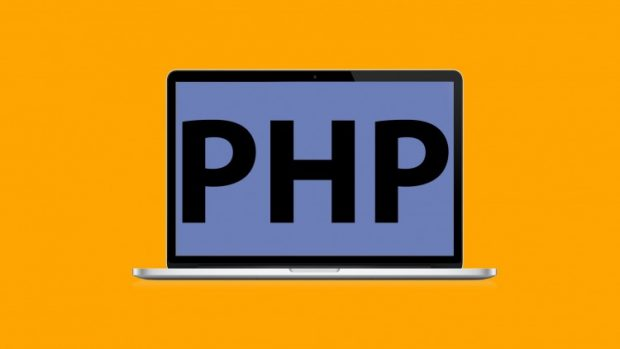![图片[1]-如何在 WordPress 中创建和添加锚链接:详细指南-光子波动网 | 专业WordPress修复服务,全球范围,快速响应](https://www.361sale.com/wp-content/uploads/2024/07/2024072908041782.png)
锚链接,也称为跳转链接或跳过链接,通过减少滚动改善了较长或文本较多的 WordPress 页面和帖子的导航和用户体验。它们允许用户通过单击链接快速跳转到同一页面上的特定内容部分。
在本指南中,我们将详细介绍在 WordPress 中添加锚链接的所有步骤和注意事项,包括经典编辑器、Gutenberg 编辑器和 WPBakery 页面构建器中的实现方法。
什么是锚链接?
锚链接是一种超链接,它不会将你带到新页面,而是跳转到同一页面的特定部分。例如,如果你正在阅读一篇较长的文章,并且顶部有一个目录,可以点击链接直接转到你感兴趣的部分。
通常,锚点被添加到文本元素,如标题或段落,但也可以添加到菜单项、按钮、图像或表单。
为什么要使用锚链接?
使用锚链接可以改善你网站的用户体验,让用户无需无休止滚动即可快速找到他们所需内容,并且还有利于网络可访问性。锚链接可以帮助 Google 等搜索引擎更好地理解你的页面结构,从而提高网站的排名。
锚链接的结构
为了理解锚链接,让我们分解一下它们的结构。锚链接由两个主要部分组成:
1. ID(标识符)
这是你添加到要链接到的元素的唯一标识符。在 HTML 中,可以像这样向元素添加 ID:
<code><h2 id="section1">section1</h2>这里,id="section1" 是唯一标识符。
2. 链接
这是可点击的部分,可跳转到你创建的 ID。使用井号(#)后跟 ID。例如:
<code><a href="#section1">Go to Part 1</a>href="#section1" 部分告诉浏览器在点击链接时跳转到 ID 为“section1”的元素。
如何在 WordPress 中创建锚链接
![图片[2]-如何在 WordPress 中创建和添加锚链接:详细指南-光子波动网 | 专业WordPress修复服务,全球范围,快速响应](https://www.361sale.com/wp-content/uploads/2024/07/2024071202453096.png)
使用 WordPress 经典编辑器
首先介绍在 TinyMCE 的经典编辑器中添加锚链接的方法,这是在 WordPress 中编辑帖子和页面的经典方式。
1、为元素添加唯一 ID
- 打开要添加锚链接的帖子或页面。
- 从可视模式切换到文本模式,可直接编辑 HTML。
- 找到要附加锚点的内容部分。
- 为元素添加唯一 ID,例如:
<code><h2 id="section1">第 1 节</h2>如果你想在某个段落中为特定单词或短语添加 ID,可以像这样添加:
<code><p>It's a <a id="specificWord">特定单词</a> 的示例。</p>2、链接到锚点
- 从文本模式切换回可视模式。
- 选择将用作链接的文本,然后单击工具栏中的“插入/编辑链接".
- 在弹出窗口中,使用井号(#)后跟你创建的 ID:
<code><a href="#section1">Go to section 1</a>![图片[3]-如何在 WordPress 中创建和添加锚链接:详细指南-光子波动网 | 专业WordPress修复服务,全球范围,快速响应](https://www.361sale.com/wp-content/uploads/2024/07/2024072908010930.png)
Click "Add link”,保存更改,就完成了在经典编辑器中创建锚链接。
3、从导航栏添加锚点
- 在 WordPress 信息中心中,转到“exterior condition”,然后转到“menu".
- 在菜单编辑器中,点击“Customized links”将其展开。
- 添加指向目标页面的链接,将井号(#)与元素 ID 一起添加到你的链接:
<code><a href="#section1">Go to section 1</a>![图片[4]-如何在 WordPress 中创建和添加锚链接:详细指南-光子波动网 | 专业WordPress修复服务,全球范围,快速响应](https://www.361sale.com/wp-content/uploads/2024/07/2024072908002757.png)
保存更改并查看结果。
使用 Gutenberg 编辑器
接下来介绍如何在 Gutenberg 编辑器中创建锚链接,这是 WordPress 中较新的基于块的编辑器。
1、为元素添加唯一 ID
- 打开要添加锚链接的帖子或页面。
- 选择要添加锚点的块。
- 在区块设置中,向下滚动并点击“以 HTML 格式编辑”。
- 找到要附加锚点的内容部分,为元素添加唯一 ID:
<code><h2 id="section1">第 1 节</h2>![图片[5]-如何在 WordPress 中创建和添加锚链接:详细指南-光子波动网 | 专业WordPress修复服务,全球范围,快速响应](https://www.361sale.com/wp-content/uploads/2024/07/2024072908013391.png)
或者,你也可以通过选择块,转到右侧块设置中的“high level”部分,然后在那里输入你的唯一 HTML 锚点。
2、链接到锚点
- 单击“可视化编辑”切换回文本块。
- 选择将用作链接的文本,然后单击工具栏中的“链接”。
- 在弹出窗口中,使用井号(#)后跟你创建的 ID:
<code><a href="#section1">转至第 1 部分</a>按“Enter”键,保存更改,就完成了在 Gutenberg 中添加锚链接。
在 WPBakery 页面构建器中创建锚链接
最后,让我们探索如何在 WPBakery Page Builder 中添加锚链接,这使你可以将锚点添加到 WordPress 页面或帖子中的任何元素。
1、为元素添加唯一 ID
- 选择并添加要添加锚点的元素(或者换句话说,链接将跳转到的目的地)。
- 打开元素的编辑窗口。
- 向下滚动到“元素 ID”部分并添加你的唯一 ID:
<h2 id="section1">section 1</h2>2、链接到锚点
- 选择并添加要添加锚链接的元素(换句话说,单击时将跳转到目的地的元素),例如“buttons".
- 打开元素的编辑窗口。
- 导航至“URL(链接)”部分并点击“选择 URL".
- 在弹出窗口中,使用井号(#)后跟你创建的 ID:
<code><a href="#section1">Go to section 1</a>单击“设置链接”,保存更改,并检查您的锚链接如何工作!
锚链接的最佳实践
![图片[6]-如何在 WordPress 中创建和添加锚链接:详细指南-光子波动网 | 专业WordPress修复服务,全球范围,快速响应](https://www.361sale.com/wp-content/uploads/2024/07/2024072908092019.png)
以下是在 WordPress 中使用锚链接的一些最佳做法:
1. 确保唯一 ID
创建元素 ID 时,确保它们在页面(或同一 HTML 文档)上是唯一。重复的 ID 可能导致意外的跳转行为。
2. 避免在 ID 中使用特殊字符
元素 ID 不能包含空格、标点符号和特殊字符,也不能以数字或破折号 (-) 开头。虽然 HTML 允许这样做,但这可能会在其他情况下造成麻烦,例如 CSS 和 JavaScript,因此最好尽量避免这样做。
3. 链接以“#”开头,但 ID 中不包含“#”
例如,链接应为“#section1”,ID 应为“section1”。这是一个常见错误,会导致锚链接无法正常工作。
4. 避免使用裸锚链接
裸锚链接或原始锚链接是使用 URL 本身作为锚点的链接,例如 https://example.com。虽然在某些情况下可能需要它们,但它们缺乏上下文,并且不能提供与描述性锚文本相同的 SEO 优势。
5. 使锚文本清晰且具有描述性
不要使用“了解更多”、“单击此处”或“继续”等含糊不清的短语,而要使用更具体的文本,例如“单击此处下载用户手册 PDF”或“了解有关我们团队的更多信息”。这可以提高网络可访问性,帮助用户了解链接将带他们去哪里。
6. 测试锚链接是否正常工作
始终测试锚链接以确保其正常工作。无效链接会让用户感到失望,并损害你的 SEO。
何时使用锚链接?(示例)
![图片[7]-如何在 WordPress 中创建和添加锚链接:详细指南-光子波动网 | 专业WordPress修复服务,全球范围,快速响应](https://www.361sale.com/wp-content/uploads/2024/07/2024072908112082.png)
WordPress 中的锚链接在很多情况下都非常有用。以下是一些示例:
1. 目录
如果您有一篇很长的文章,顶部带有锚链接的目录可以帮助读者跳转到他们想要阅读的部分。
2. 单页导航
对于单页网站,锚链接可以帮助用户快速到达不同的部分,如“关于”、“服务”和“联系”。
3. 行动呼吁 (CTA)
使用锚链接引导用户执行特定操作,例如填写表格或查看产品。
4. 长篇内容
将长篇内容分成带有锚链接的部分,以便读者可以轻松找到所需的信息。
5. 滚动回到顶部
引入“滚动回到顶部”按钮(通常位于网站的右下角),可以帮助用户返回顶部并快速采取行动。
Frequently Asked Questions
1. 锚链接和常规链接有什么区别?
锚链接指向同一页面的特定部分,而常规链接通常会将你带到不同的页面。
2. 锚链接能改善 SEO 吗?
是的,锚链接是内部链接策略的一部分,它可以帮助搜索引擎了解页面内容的结构和重要性,从而改善 SEO。
3. 锚链接可以提高可访问性吗?
是的,锚链接可以帮助用户(尤其是残障人士)更有效地浏览长内容,从而提高可访问性。
4. 我如何测试我的锚链接是否有效?
可以通过点击锚链接来测试它们是否将你带到正确的部分。还可以使用浏览器开发人员工具来检查是否存在任何问题。
5. 有什么插件可以帮助我向 WordPress 添加锚链接吗?
是的,有一些插件可以帮助你创建并添加锚链接至 WordPress 布局中的任何元素,例如 WPBakery Page Builder。
![图片[8]-如何在 WordPress 中创建和添加锚链接:详细指南-光子波动网 | 专业WordPress修复服务,全球范围,快速响应](https://www.361sale.com/wp-content/uploads/2024/05/2024053102423159.png)
reach a verdict
在 WordPress 中添加锚链接可以极大地改善您网站的导航、用户体验、SEO 和可访问性。通过遵循本指南中概述的方法,可以使用经典编辑器、Gutenberg 编辑器或 WPBakery 页面构建器轻松地在 WordPress 中创建锚链接。每种方法都有其优点,但如前所述,WPBakery 脱颖而出,允许你将锚链接添加到页面上的任何元素。
Link to this article:https://www.361sale.com/en/14849The article is copyrighted and must be reproduced with attribution.
























![表情[xiaojiujie]-光子波动网 | 专业WordPress修复服务,全球范围,快速响应](https://www.361sale.com/wp-content/themes/zibll/img/smilies/xiaojiujie.gif)








No comments